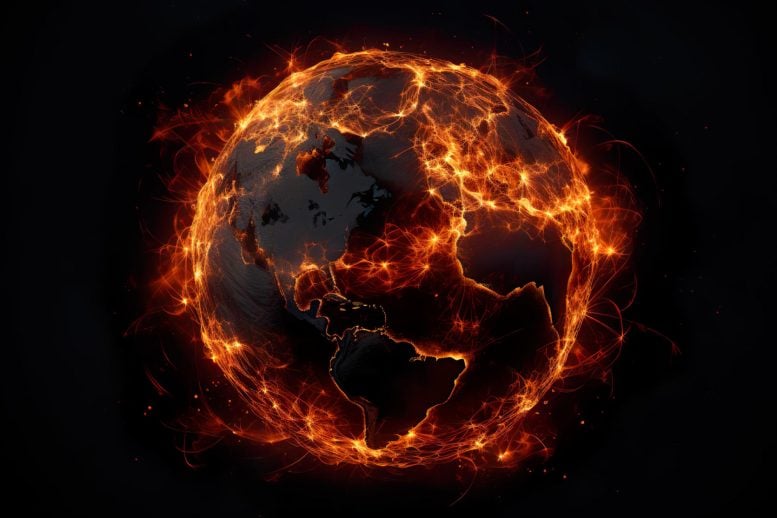
Researchers have developed a new approach using satellite observations and climate models to reduce uncertainty regarding future stratospheric water vapor changes. Their findings suggest that extreme scenarios of water vapor increase in the stratosphere, which could adversely impact the ozone layer, are less likely than previously believed.
New research led by the University of East Anglia (UEA) reduces uncertainty in future climate change linked to the stratosphere, with important implications for life on Earth.
Man-made climate change is one of the greatest challenges facing us today, but uncertainty in the exact magnitude of global change hampers effective policy responses.
A significant source of uncertainty relates to future changes to water vapor in the stratosphere, an extremely dry region of the atmosphere 15–50 km above the Earth’s surface.
Future increases in water vapor here risk amplifying climate change and slowing down the recovery of the ozone layer, which protects life on Earth from harmful solar ultraviolet radiation.
Now an international team led by Peer Nowack, until recently a member of the Climatic Research Unit at UEA, has developed a new statistical learning approach that combines information from satellite observations with state-of-the-art climate model data to narrow the range of likely future stratospheric water vapor amounts.
One of the key results, published in the journal Nature Geoscience, effectively rules out the most extreme scenarios, which imply that water vapor concentrations could increase by more than 25% per degree of global warming. The new approach represents a 50% reduction in the 95th percentile of climate model responses.
“Man-made climate change affects Earth’s atmosphere in many important and often surprising ways,” said Prof Nowack, now at the Institute of Theoretical Informatics at the Karlsruhe Institute of Technology, Germany.
“In our paper, we look at changes in stratospheric water vapor under global warming, an effect that is still poorly understood. Since water vapor is central to the physics and chemistry of the stratosphere, I felt that we crucially need a new approach to address this longstanding uncertainty factor.
“With our new data-driven approach, which exploits machine learning ideas, we were able to make highly effective use of Earth observations to reduce this uncertainty. This required us to develop a framework in which we could combine scientific understanding and mathematical relationships learned from satellite data in innovative ways.”
“With this approach, we were able to show that many climate model projections of very large stratospheric water vapor changes are now inconsistent with observational evidence,” said co-author Dr. Sean Davis, a Research Scientist at the National Oceanic and Atmospheric Administration in the US, specializing in satellite measurements of stratospheric water vapor.
Quantifying stratospheric water vapor trends under global warming is a longstanding research challenge. The complexity of the underlying processes that control stratospheric water vapor and the relatively short record of high-quality satellite observations has made this task difficult.
The presence of so-called climate feedback presents an additional challenge, as these can act to further amplify or dampen global warming, therefore leading to a wider range of possible future temperature increases.
The amount of water vapor that the stratosphere holds is an example of one such feedback, which climate models have predicted to increase, but the range of modeled increases has remained very wide for decades.
This is important, because large climate-driven increases in stratospheric water vapor, like those projected by many climate models, could delay the recovery of the ozone layer and of the Antarctic ozone hole over the course of this century.
However, Manoj Joshi, Professor of Climate Dynamics at UEA and a co-author on the paper, said: “Our research implies that while stratospheric water vapor concentrations are still likely to increase with global warming, the large changes that could substantially delay ozone recovery are highly unlikely.”
Reference: “Response of stratospheric water vapour to warming constrained by satellite observations” by Peer Nowack, Paulo Ceppi, Sean M. Davis, Gabriel Chiodo, Will Ball, Mohamadou A. Diallo, Birgit Hassler, Yue Jia, James Keeble, and Manoj Joshi, 26 June 2023, Nature Geoscience.
DOI: 10.1038/s41561-023-01183-6
The research was funded by the UK Natural Environment Research Council (NERC) through the ML4CLOUDS project.

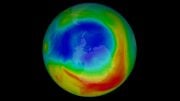
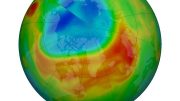
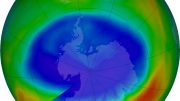
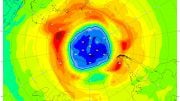

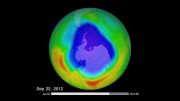

Scitechdaily is taking my criticisms of their AI-generated climate images seriously. The shapes of South America, the Caribbean, and Africa are actually pretty accurate here; that cinder may well be Earth, though I think the coastlines would have changed in that situation, with the oceans on fire. It would, however, be climate change that would cause this situation, given about seven billion years when the Sun becomes a red giant. So, yeah, recycle or something.
Anyway, it’s nice to see the climate models predicting extreme results get falsified. “Future increases in water vapor here risk amplifying climate change” is an odd statement, since water vapor has a high albedo and reflects sunlight back into space. You may know it as clouds, and upper-atmosphere ones are really very pretty.
Water vapor has no albedo; it is transparent at visible wavelengths of solar radiation. It is the humidity that you feel. It is not the same as clouds, which are created by the vapor condensing and forming droplets that are small enough to remain suspended in the air. As discreet droplets, they refract light, and through total internal reflection, send all light in all directions, creating a high albedo, which approaches the ideal Lambertian diffuse reflectance.
True, I skipped a step. It’s cold up there, so vapour making it to the stratosphere condenses or freezes. Anyone else reading and unfamiliar yet interested should definitely look up high-atmosphere noctilucent clouds and polar stratospheric clouds. That refraction makes beautiful luminescent and tie-dye clouds.